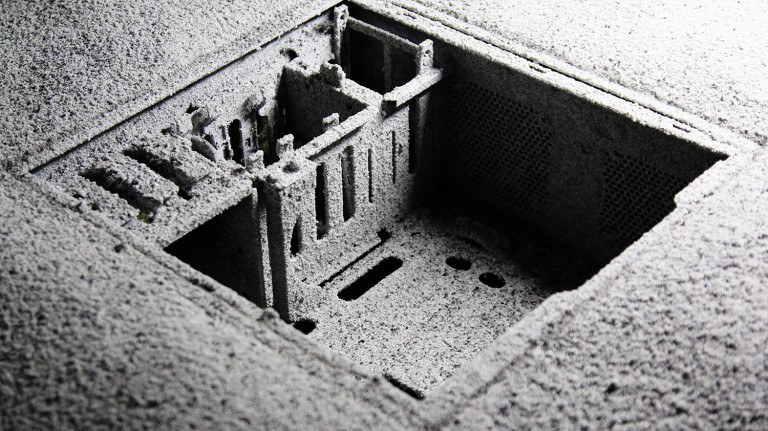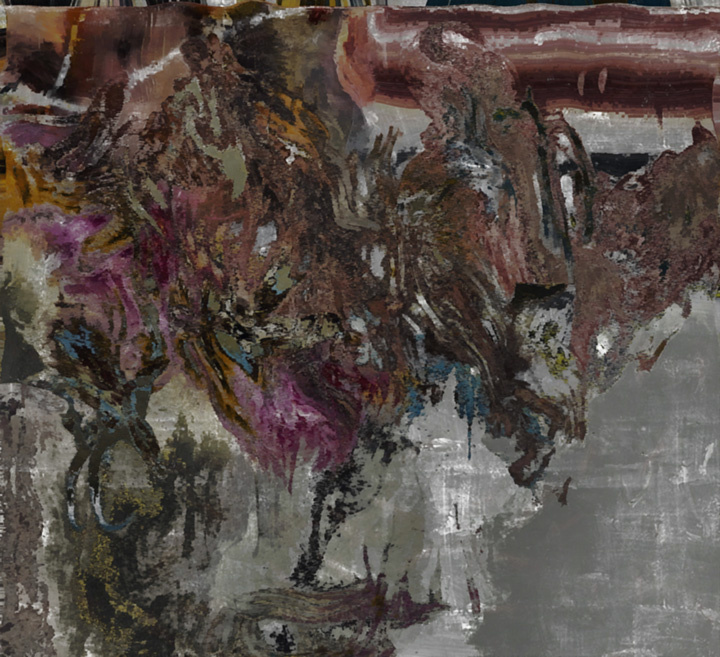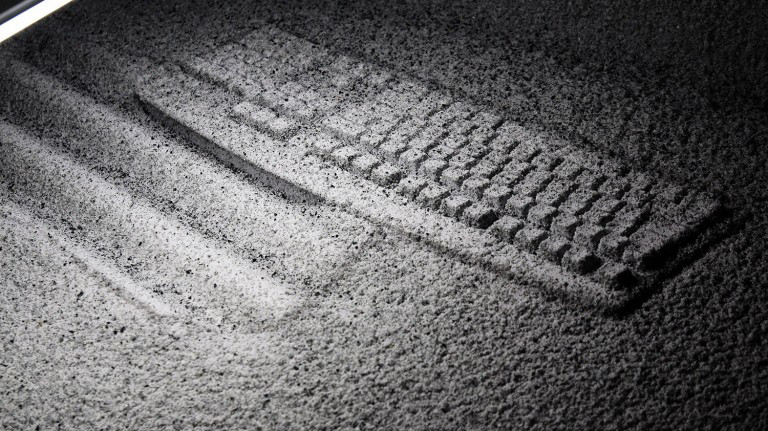Arshake is pleased to relauch, translated into Italian and divided in two parts, the interview of collective recto/verso to Gregory Chatonsky, French/Canadian conceptual artist whose work focuses on the relationship between technology and affectivity, co-founder – at the dawn of the Internet – of the online collective Incident.net.
recto/verso: Being one of the pioneers of net art, what is your definition of it? How do you distinguish someone who makes art online from someone doing things online? I think that Capture follows this path of reflection exactly…
Gregory Chatonsky: It would be difficult to summarize all the history of netart. It has given rise to many debates and multiple strategies. What I have noticed is that very quickly, some players in the netart wanted to invent its History and, at the same time, historicize themselves. The almost immediate passage between Contemporary and History seems to be a symptom of our time: we know that all is going to be lost very quickly, that immediate obsolescence is also going to affect our devices and that we need to develop discourses to follow in another temporality. Thus the notion of pioneering, of frequent use, is rooted in the imagination of the American West, of the Wild West in Silicon Valley. When the classic net.art declare that the netart died, there is, beyond a false forward thinking, a way of appropriating a domain: because if it is dead, we are simultaneously the first and last. The act of certifying death is also a declaration of birth. I think it’s time to make a critical juncture and analyze from a distance this historicizing procedure as an artistic capture strategy. Unfortunately some art historians have taken this to its first degree. As for the distinction between an art that would address the network as a medium and a different art, which would consider it in a strictly instrumental way, I see it there an avatar of Greenbergian modernity where the sovereignty of the artwork is identified with the process of empowering the medium. What interests me here is how the “net art” reactivated past discussions and became a bearer for nearly 20 years of a certain modernist posture that saw the development of coding, glitch, GIF, etc. Web for web, art for art, money for money, these self-references circulate on each other. For my part, I was moved by another intuition consisting of how existence seemed to intertwine with network technologies. It is this grey area between life, body, emotions and the web that has been the object of my artistic research. This may seem obvious today, as we are constantly connected, but in 1994, when I started doing netart basing Incident, it was not so clear. I was moved by these forums, by these meetings, by all these texts and new kinds of images. Something was troubling me. I had the feeling that history was about to be made. I was at the time very marked by Histoire(s) du cinéma by Godard and I thought that if the cinema was the history of the twentieth century, the Web would probably be the history of the twenty-first century and therefore we need to tell it and imagine it. Telling this Story was to make fiction.

You are part of a generation born when the Internet did not exist, how did you discover it and how has your relationship with this evolving technology changed over the years?
We tend to consider the Web as independent of a wider telematics context and we think that this network was a first time, which would justify the existence of “digital natives”, the delimitation that would set a before and after. Now, the position of France was special with the introduction of the Minitel in 1980. The Web is of course different from the Minitel but they have some common points: waiting time, navigation, the importance of the text, the remote sociality, etc. As far back as I can remember, I have had access to a network, my psychology, my body, my desires have grown with it. Internet was the logical continuation of the Minitel and of my experience of BBS on Amiga, a sense of community without community. The first time I had access to the web as such was in 1994. I was working for the magazine Traverses of Centre Pompidou which had a connection thanks to IRCAM. Having Internet at home was rare and expensive at the time. So I spent hours browsing and I was immediately fascinated by the strangeness of what I found. There were not a lot of sites, but it already had a certain density, texts that were not published elsewhere. It is hard to imagine, to get back into the context of the time. Some books were rare, some music too, nothing was circulating as now, the underground was not just a marketing ploy, but a fact of diffusion. Soon I felt that something was happening, that a culture, that is to say a certain emotion the face the History in the making, was being born. There were then so many periods of evolution, of breaks in my relation to the network. It has been difficult to relate to it, I can only follow a common thread: the Internet is an observation post. I see the symptoms, a possible fate of our civilization. I never had the feeling of dominating the Internet, of creating or hacking it as an artist. I had the impression of being made by it, of having to deal with it, to adapt myself. Not that the technological developments in themselves are important, but rather the uses, the way people experience the Web and how the network intensifies rifts in us. I am always fascinated by the anonymous community on which we can navigate by watching photos and texts of lives. Sometimes I try to follow the profile of someone I do not know, I find their addresses, I look it up on Google Streetview and I imagine what it would be like to live there. I still remember a bit of the world before, not just before the Internet, but before globalization (and in a sense they are the same). But it is increasingly hard to feel this world that has disappeared.

In your text « Esthétique des Flux » you propose a contemporary reading from a Historical analysis of the “flows”, fundamentals in the practical and ideological foundation of Western civilization. Can you define the concept of flow, in a historical context?
The concept of flow interested me for a long time as it was the subject of my PhD. It is a word frequently used to describe the experience on the Web, but also many other things: the migratory and financial flows, the urban and energetic flows, the ecological and natural flows, the bodily ones, etc. Beyond this diversity of application fields, the flows indicate that something can outflank us and overwhelm us. Something so big, so complex and massive from which is difficult to protect ourselves. Everywhere and nowhere at once, they exceed us in the manner of Timothy Morton’s HyperObjets. I tried to develop a historicity of flows, assuming they are essential to the material foundation of the city. To group individuals in a small space, you have to enter and exit flows. They therefore respond to very concrete questions of a hydrological kind. They are at the same time laden with a heavy meaning in the cosmological foundation narratives. Finally, they are ambivalent: what can cause death by flooding is also the source of life. This ambivalence is at the heart of the relationship between the Egyptian civilization and the Nile floods. I discovered that, over time, the flows put into play three fundamental areas: nature, the body and techniques. Depending on the period, the flows enter these fields at different ratios of proportion, reports that define the Zeitgeist. Physis for the Greeks, the body for bleeding of the classical age, the techniques for the industrial age. My hypothesis is that the Web is a turning point in articulating the nature, the body and techniques in a new way. Perhaps it is the product of our perspectival view, showing us the turning point of our contemporaneity, but those are disturbing elements. The artworks themselves could be considered as attempts, in the course of history, to shape the flow, to answer this impossible challenge of securing the moving while keeping its fluidity. It is as if the historical ambivalence of flows, source of life and death, met this other aesthetic and material ambivalence. I can not here list all the consequences of flows, but I have tried to develop a historical, economic and ontological system leading to an aesthetic between inflow, influx and reflux allowing, I think, to find a balance between the understanding of some new and some historical heritage.

In the same article you talk about informatics as a grouping of nature, body and technique, in a “black box”. In it the aesthetic of flows manifests itself in a feeling that at the same time poses a distance, and it is this excess that the machine helps man to perceive. In what ways do the flows go beyond human and take us closer to aesthetics?
If the machine opens an overtaking and an aesthetic approximation, which may seem contradictory, it is because it changes the same conditions of producing reality. To understand this, we must go back to the first cybernetics and speculative debates between Wiener, Neumann, Shannon and Turing. To transmit a signal over long distances, we go from a physical apprehension to a conception of the signal as a code. This may sound abstract, but it is what will pave the way for the widespread consolidation, not because the reality is originally encoded, but because it can be codified: everything will be considered as a binary sequence. This is the final plan of the Matrix film. The most important consequence of this codification is the ability to transform reality. The discovery-invention of the genetic code, which is contemporary to the appearance of informatics, will help to recode the living being, that is to say, to transform the conditions of the observer himself. Science won’t be the apprehension, ideal or deferred, of that which exists independently of it, but technological ability to transform what is. We are not looking for the physis anymore, but to know what can be changed. The technological speculation acts on the world and produces its globalization, its becoming-world. The computer is a “black box”, in the words of Minsky, which dreams of being isolated and sovereign in the manner of data centres. Buried in its circuits are the conditions of the experience: the repetition of calculation will be flawless Not counting on the failure that is inherent in the technique. From there, the “black box” makes a double movement. It sensory cuts us by its sovereignty, it brings us closer immersing us, it is this structural ambivalence of flows that amuses us so when we see a person with a virtual reality headset as Oculus Rift: the telescoping between the inside and the outside. The web connects the “black box” to the world, it is a meditator. Even more, it is the globalization the world becoming world, which is probably not yet world. It is nature that is affected, the network crosses territories and seas, the data centres require a lot of energy, etc. The bodies are troubled, connected remotely, wishing, at the heart of this separation, for a reconciliation. The network mobilizes our bodies. Finally, there are of course the technologies that are constantly materially weaving, but also ideologically on the Web. The “black box” sees everything as a binary stream, and this simplification can integrate all other streams because they are subject to a higher flow, 0 and 1. I am pleased to see that this emotion of the network, which goes far beyond a technological and policy framework, and finally affect the art world reflexively after years of blindness. Many are beginning to realize that the network reconfigures how to imagine, produce, distribute, document and market the works of art. This becomes excessive even today because we are finally overestimating the importance of the network and the separation of a wider ontological context.
… to be continued…
The interview (Aesthétique des Flux. Intervista con Gregory Chatonsky) originally appeared on recto/verso‘s platform as part of the issue #4 of an online thematic magazines dedicated to Online/Offline, following a conference dedicated to the theme organized in Athens by HD Kepler, two artist-run spaces 3 137 and Enterprise Projects. recto/verso is a research collective of widely understood curatorial practices aiming to broaden experiences while investigating the nature of images in contemporary society.








































